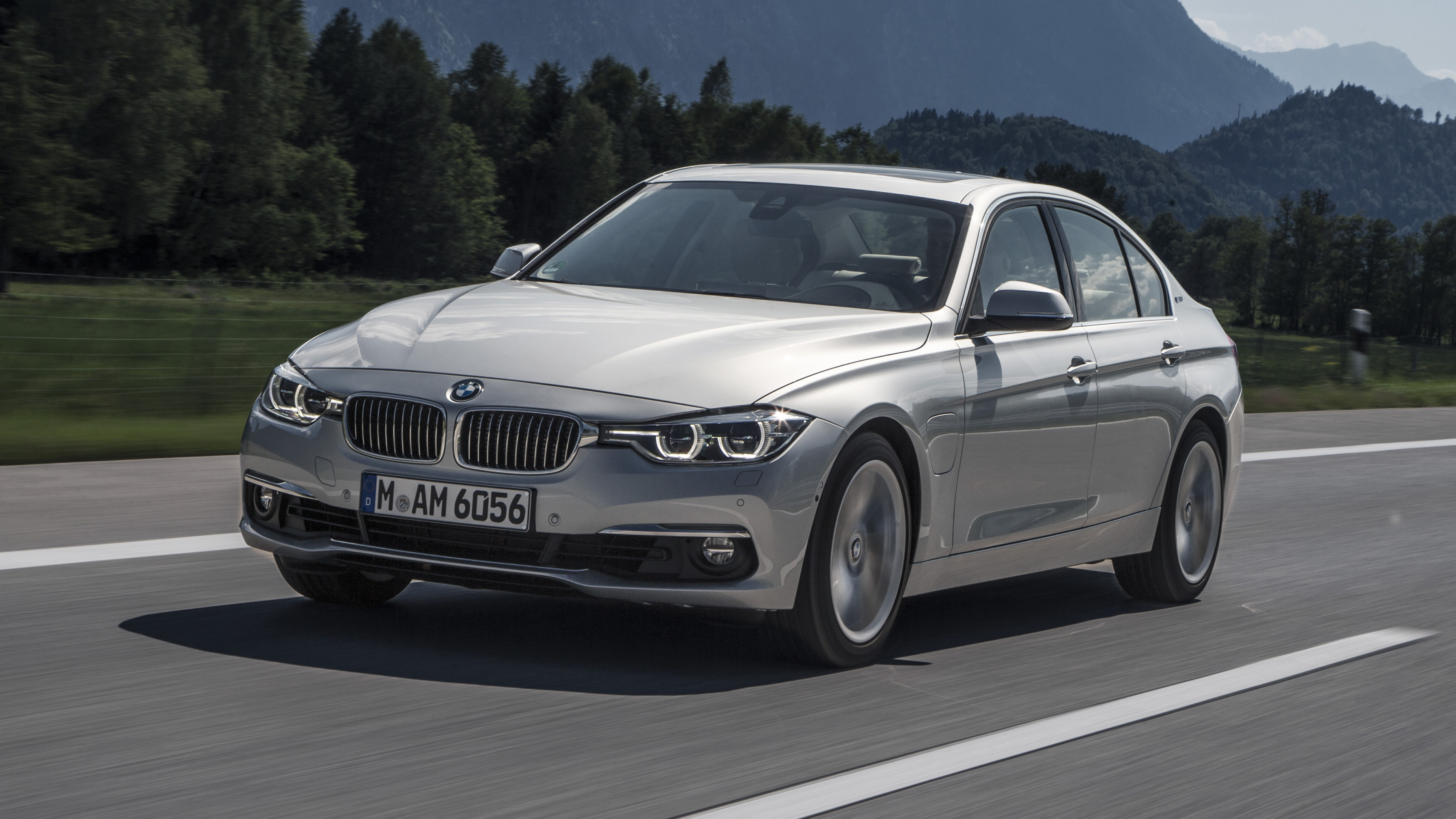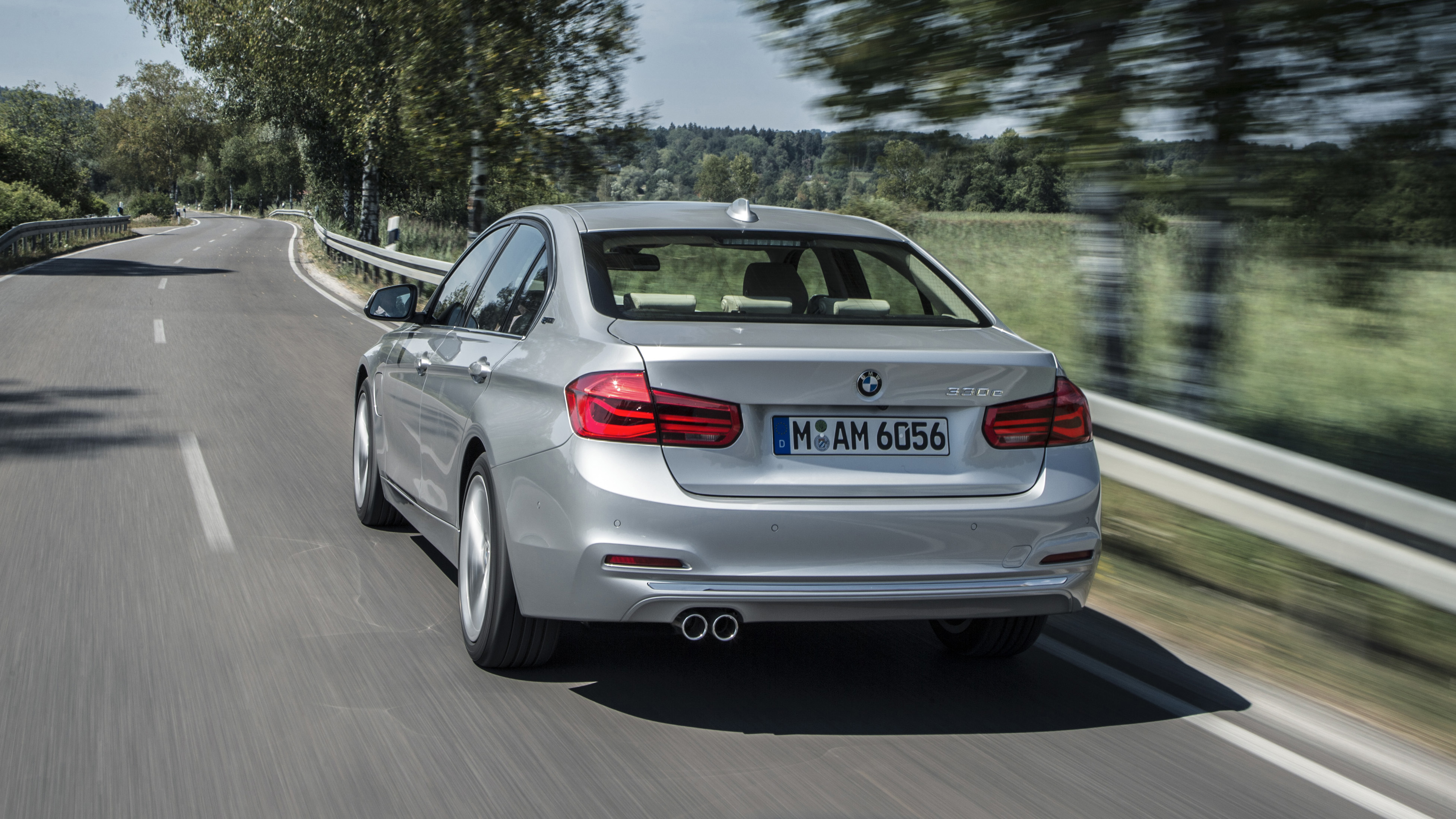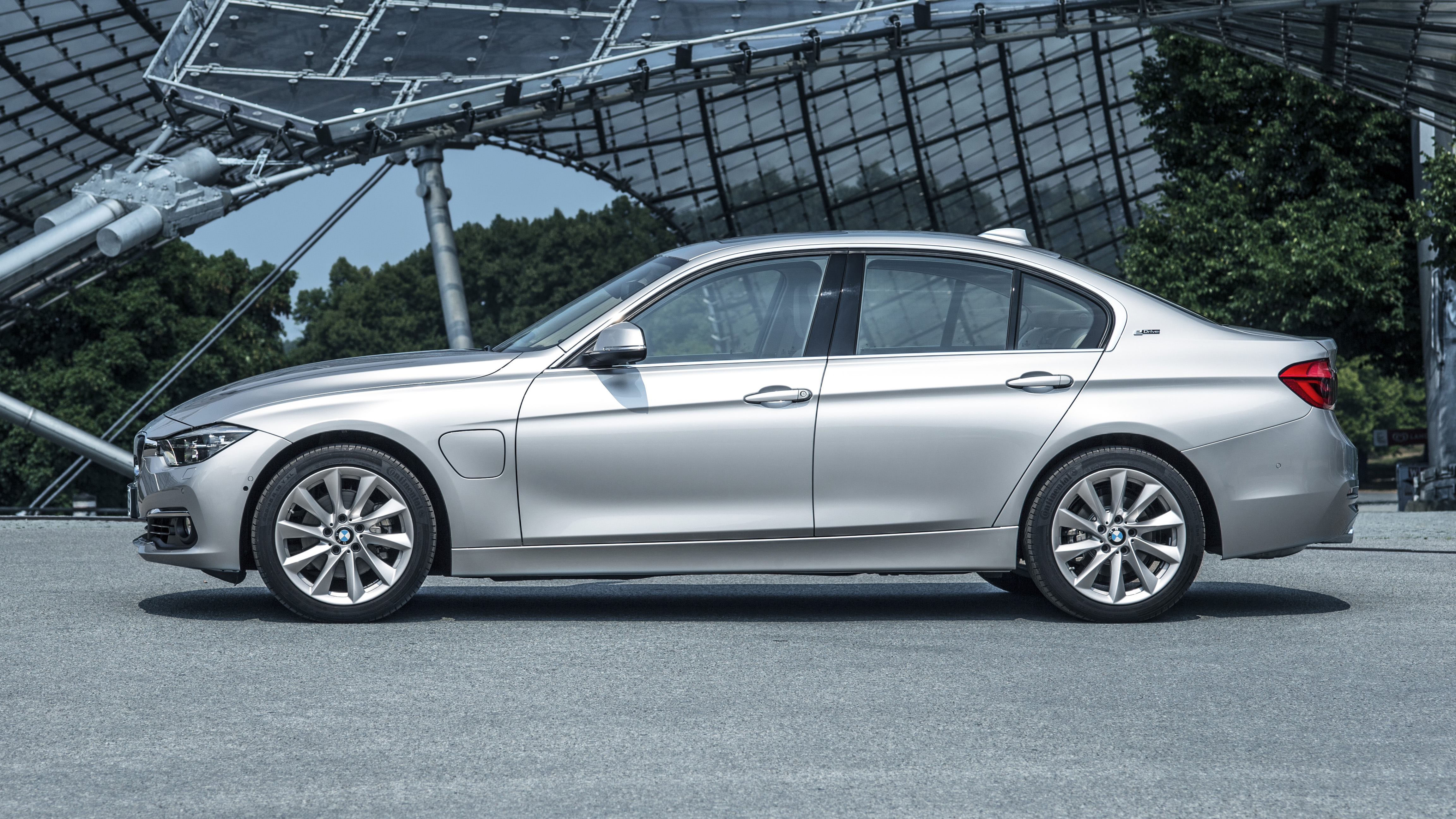
A BMW 330e review? Haven’t you driven this 3 Series before?
We have. Paul Horrell reviewed BMW’s plug-in hybrid 3 Series back at the start of the year, but that was a left-hook German car and although none of the underpinnings have changed since it’s worth getting to grips with this car again.
Why?
Because a bit further down I’m going to feed you some figures. I’ll warn you so you have a chance to skip when we get to the dull bit. But if you’re a company car buyer, it’s worth staying tuned, because, for you, that’s the good bit.
So is it fast?
Probably not the most essential question we need to answer, but yes it is. The 330e is one of those cars that’s faster than you expect it to be. The 2.0-litre 184bhp turbo petrol is augmented by an 87bhp electric motor, yielding a combined 249bhp and 310lb ft. It drives the rear wheels alone and is capable of 0-62mph in 6.1secs while delivering 148.7mpg and 44g/km of CO2 on the combined cycle. Provided you have an SE version. Upgrade to Luxury or M Sport and the fatter tyres dent emissions by a gram or two.
Good mid-range torque, huh?
Exactly that. Because of the electric assistance you get this lovely surge of power from 2,000 to 4,000rpm, where the engine seems more abundant than it should be. Don’t bother going higher up the rev dial because the 2.0-litre turbo loses its manners at high revs, becoming gruff and making you wonder if you might have been better off with the diesel.
And would you have been?
That all depends. If you’re buying privately and cover decent mileages, then undoubtedly, because the 330e isn’t anything like as economical as the figures suggest. I know, can you believe it?
Top Gear
Newsletter
Thank you for subscribing to our newsletter. Look out for your regular round-up of news, reviews and offers in your inbox.
Get all the latest news, reviews and exclusives, direct to your inbox.
So I did a whole load of mixed driving – out of London on a Friday evening, running local errands over the weekend, one decent 60-mile trot on Sunday and I got 38.3mpg overall. Which is not 148.7mpg. However, if you read BMW’s small print, there’s a couple of interesting things. It suggests that on trips of 31-37 miles you should get 59mpg, and on longer trips, just 34mpg.
We all know electricity only makes sense on short hops. The claimed e-range is 25 miles, but in all honesty you’ll be doing well if you manage 10 miles. But where the 330e scores over rivals including the Passat GTE is how simple and understandable the tech is.
There’s just one button – eDrive – behind the gearlever you need to worry about. It defaults into an auto setting which reclaims electricity when it can and uses it as it sees fit. Switch to Max eDrive and the system will use electricity as much as it can. Press once more for Save and it’ll work the engine a little harder to charge the battery back up. But your fuel economy will suffer.
On the whole it replenishes itself in pretty short order, and watching the various graphs and charts is part of the ‘fun’.
I’ll take your word for it, but is it ‘fun’ to drive?
It’s easy to forget just how well a standard 3 Series drives. This one moves naturally, feels biddable and communicative, has a beautifully judged ride and handling balance. Yes, the engine has almost no charisma, but the effortless pace it delivers is well suited to the car’s dynamic behaviour.
Which is all the more remarkable when you learn it weighs 1,735kg. A 320d is 1,505kg. Yes, you do feel the weight in corners, but because it’s low down it actually adds stability and makes the car feel very planted.
Two things, though. I don’t think BMW has quite mastered the gearbox software for the hybrid yet. We know how good ZF’s eight speed auto is, but here it didn’t like playing in manual mode at all. And the brakes take a bit of getting used to – the pedal is obviously too busy working out how much regeneration it can manage to deliver proper feel.
Is it time for the dull bit now?
It is. So, if you’re buying privately, have a 320d or 330d. you’ll get 50-55mpg out of the former, probably 45-50 from the latter. Both are rapid and rewarding and even as lease deals cost less than a 330e. The hybrid works out at about £350-£380 per month, as does the 330d. A 320d is £50 or so less. The used market doesn’t quite know what to make of the 330e yet, so residuals are not as strong as for the diesels.
BMW charges a list price of £33,935 for an SE grade 330e. Go for an M Sport and it’s £36,735. A 330d M Sport is £38,100, has 254bhp, 413lb ft and does 0-62mph in 5.6secs. It’s tremendous. Have one of those.
Come on then, what if you’re a company car buyer?
I thought you’d never ask. Right, CO2 and BIK. That’s benefit in kind, a value that the British tax man puts on you getting to swan around in a car that your company is paying for. It’s calculated from the value of the car and the CO2 it emits. So clean, cheap cars are good, Maseratis and supercharged Range Rovers are for Philip Green.
So a 320d, which puts out 111g/km (assuming you’ve avoided the less powerful EfficientDynamics model at 99g/km) is taxed at 19 per cent of its value. If you’re running it for 36 months/60,000 miles and you’re a higher rate tax payer, it’s going to cost you £2,769 per year to bat about in the same 3 Series that everyone else has got.
However, the 330e is only taxed at seven per cent, which means our higher rate tax payer will only have to shell out £949 per year. OK, the diesel will be more efficient if he’s doing the sort of mileages that 60,000 miles over three years implies, but he’s probably not paying for the fuel. So he’s likely to save £1,800 per year. Enough money to splurge on a holiday. Now do you see why company car drivers like hybrids?
I do. So is this a good one?
It is. When all’s said and done and when figures are ignored, the 330e is an easy-to-use, fundamentally well sorted and desirable small saloon. It feels good nipping around on electric, it operates smoothly and (mostly) seamlessly and generates a certain amount of interest. It’s not a patch on an i3 for cleverness and design, but it’s got most of the good stuff packaged into a shape we all know and love.
Featured







